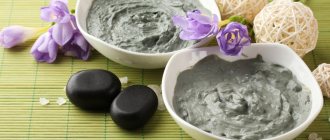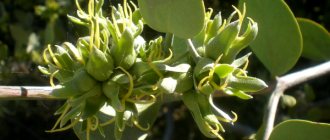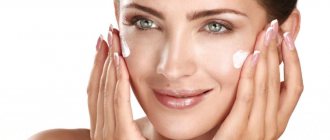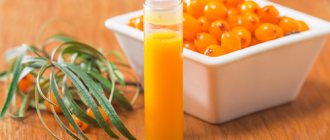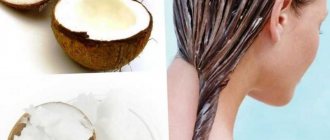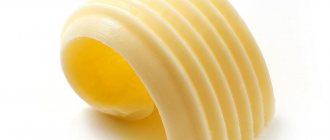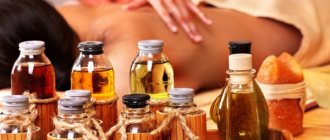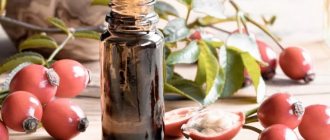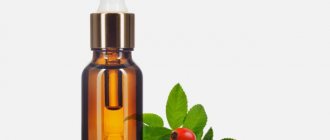Text: Daria Tatarkova
Natural oils can serve as a great help in self-care: they can help smooth out skin unevenness, cope with flaking, or, conversely, with oiliness. Many natural oils are true multitaskers, they are cheaper than many products that contain them, and the origin and composition of the oils themselves are easy to trace. We figured out why ten natural oils are good and asked cosmetologist, pharmacist and founder of The Organic Pharmacy brand Margot Marron to comment on them.
Margo Marron pharmacist, founder of The Organic Pharmacy brand
Natural oils are one of the pillars on which the world of cosmetology rests: they include vitamins A, E and many others; they moisturize, nourish, protect, they can be used on the face and hair both in pure form and as an addition to daily care, making masks out of them, instead of creams and even for washing. Despite the apparent absurdity, many natural oils perfectly dissolve makeup and skin impurities, while they themselves are not comedogenic and do not require further care. Washing with oils is also suitable for those with oily skin: the use of oils similar in composition to sebum helps regulate it and, unlike drying agents, does not cause the skin to restore the protective barrier and produce additional sebum.
Essential fatty acids, which are part of many natural oils, are extremely important for the health of the entire body and skin, but they are not synthesized by humans on their own, so they must be consumed with food. A lack of these acids leads to skin withering and its inability to absorb moisture, but their balance can be restored with the help of cosmetics and oils. Oleic acid restores damaged cell membranes so they can retain moisture again; The epidermis improves its protective functions, while the aging process of skin structures slows down and metabolism within cells is activated. Linoleic acid ensures the penetration of biologically active substances into the deep layers of the skin, promotes moisture retention in cells and helps get rid of dryness and flaking.
Always choose only unrefined, cold-pressed oils - this phrase means that the oil is obtained by pressing the raw product without any thermal or chemical treatment, which causes irreparable damage to the beneficial properties of the oil. This way you acquire the most useful and vitamin-rich substance.
Coconut
The first thing that comes to mind when it comes to beauty oils is probably coconut oil. Those who know nothing about it have clearly lived somewhere in isolation - for the last couple of years, everyone who is not too lazy has been trumpeting about its miraculous properties: from beauty bloggers to weight loss specialists and adherents of healthy cooking. Some take it before meals, some use it for oil washes, instead of hair conditioner, and some even use it when cooking instead of butter and sunflower oil.
It is important not to overdo it. Coconut oil is extremely nutritious, so try it in small quantities first. Both skin and hair become radiant from coconut oil masks - it perfectly replenishes the lack of natural oils and has antimicrobial and antibacterial properties.
Margot Marron
In most cases, in cosmetology it is customary to use refined coconut oil, but in our laboratory we prefer to use pure, first cold-pressed coconut oil, thick and dense white. Despite this thickness, it is completely non-comedogenic, has a powerful antibacterial effect, creates a protective layer on the skin that prevents sunburn and chapping, and is also suitable for all skin types.
Olive
Olive oil is good not only for Mediterranean recipes, but also for improving skin condition - it contains a large amount of antioxidants. It has anti-inflammatory properties and can be used as a base for a scrub (just please don't use sugar as an abrasive, as half of YouTube advises). The most popular combination for oil cleansing includes just this - olive oil perfectly moisturizes the skin without clogging the pores. If you combine it with castor or hazelnut oil for washing, you should take into account the characteristics of your skin: the drier it is, the more of the first you need, up to the complete abandonment of the second.
Margot Marron
When used externally, olive oil retains moisture and saturates the skin and hair with vitamins A, E, D, B and K. It perfectly cleanses the skin of impurities and removes even waterproof makeup; it can be applied instead of eye cream, and does not necessarily need to be washed off : If you don't have very oily skin, you can use the oil instead of night cream and leave it on your skin until the morning.
The difference between essential oil and regular oil
Essential oils for facial skin are completely natural products obtained from plants and do not contain any impurities. That's why their aroma is pungent.
And although these substances are called oils, they do not leave greasy stains, because they tend to evaporate at room temperature, leaving only a smell.
The product is obtained from flowers, leaves, stems, and roots of plants by:
- pressing;
- distillation;
- extraction.
This process is quite labor-intensive, so the cost of such oils is an order of magnitude higher than that of aromatic and other oils.
A common property of essential oils is that they have poor solubility in water and good solubility in wax and any other oils.
Plastic surgeon Richard Rand
Esters are in demand in the pharmaceutical industry. They are included in various medications: inhalation solutions, ointments due to their unique antibacterial and anti-inflammatory properties. For the same reason, they are widely used in the cosmetics industry.
Castor
Castor oil can definitely come in handy to regrow your eyebrows after that unfortunate decision to pluck a little more or pluck your eyelashes, just as your grandmother advised. It is obtained from a plant with the unsightly name castor bean, but don’t let that scare you - it helps to smooth out stretch marks and scars a little, a couple of drops can be added to your daily care products, but most importantly, it is indispensable for cleansing the skin. Castor oil gently dissolves impurities and, in combination with moisturizing oil - jojoba or olive - is effectively used in oil cleansing. Contrary to popular belief, in many cases of skin problems it is not necessary to constantly dry out the skin with drugs, but to dissolve impurities without removing the skin's natural oil barrier - and this is where castor oil comes to the rescue.
Margot Marron
Ricinoleic acid, which is part of castor oil, gives it amazing nourishing and softening properties, helps cope with dry skin, flaking and loss of elasticity. However, it can cause an allergic reaction, so you need to use castor oil very carefully and precisely. Apply literally one drop at a time on your eyelashes, spreading from the tips to the base and being careful not to touch the skin of your eyelids.
Contraindications and side effects
Due to their naturalness and the absence of synthetic compounds in their composition, cosmetic oils have virtually no contraindications (except for individual intolerance and allergic reactions).
Before using this or that product for the first time, you must test it. To do this, apply a few drops of the selected product to the inside of the elbow and wait 10–12 hours. If there is no negative reaction (itching, rash or redness), you can safely use the oil.
Side effects in the form of clogging of pores, film formation and oily sheen may occur if the conditions and duration of use of the product are not met. Therefore, before starting the procedure, it is worth studying the characteristics of the chosen product and possible ways of using it.
tea tree
Tea tree oil, familiar to all fans of Lush, who use it in their popular Tea Tree Water. The antiseptic properties of tea tree oil cannot be compared, perhaps, with almost any other - this is the best remedy for drying out a nasty pimple overnight, or even in a couple of hours. It perfectly removes redness and helps fight oily skin without drying it out. It can be used either spot-on or as an additive to used products aimed at combating imperfections or acne. The main thing to remember is that, unlike most other oils, it is extremely toxic when taken orally, so you should not experiment, but leave it on the shelf with jars.
Margot Marron
One of the most effective essential oils. It has unique antiseptic, antifungal and bactericidal properties, and therefore is actively used both for healing cuts and burns, and for treating acne-prone skin. Despite the pronounced smell and quick effect, the oil is not allergenic and its application to the skin in its pure form does not lead to irritation or burns of the skin and mucous membranes.
Essential oils for age spots
It is recommended to pay attention to bergamot. The essential oil of this plant works well as an effective remedy for lightening the skin and eliminating age spots.
It reduces the production of melanin in pigmented areas, which leads to a gradual alignment and lightening of the complexion.
The liquid brightens and saturates the epidermis with vitamins, providing the skin with high-quality nutrition and hydration.
It is recommended to use the product in the evening so that it is well absorbed and acts during sleep.
Essential oils for the face based on lemon also have a whitening effect; according to reviews, they even out skin tone and noticeably lighten age spots after just a few weeks of daily use.
It is recommended to apply the ether pointwise to areas with increased pigmentation. In addition, this product can be used to treat infectious and inflammatory processes on the skin, eczema, and dermatitis.
Avocado
In the “most underrated oil” category, avocado oil will definitely win - there’s not as much hype around it as there is around coconut oil, but it’s definitely not inferior to it. Unlike many other oils, it is obtained not from the seeds, but from the pulp. It contains vitamins A, E, antioxidants and much more - in practice this means that if it suits you, then you can use it for everything: wash, moisturize, face, body and hair - it is truly a universal oil. Besides the fact that it can help improve skin and lighten scars and help mature skin, you can safely cook with it to reap all the nutritional benefits of avocados.
Margot Marron
Avocado oil is similar in composition to sebum. It promotes the production of collagen, has excellent restorative properties and is suitable for washing, however, it is not recommended for application to the skin as a treatment in its pure form, since it is quite heavy - it is better to mix it with other oils.
Causes of female aging
Aging is a natural process of the body that cannot be prevented, but it can be delayed by rejuvenating the skin of the face. And it's not about the number of years. Scientists have long identified and proven the main factors that influence the rate of skin aging and the condition of the body as a whole:
- Nutrition. With food, not only vitamins and nutrients enter the body, but also toxins that poison and destroy the body’s cells, leading to aging. Therefore, you should take your food choices seriously. The most harmful of them are: sweets, which destroy collagen in the skin and also contribute to rapid weight gain;
- foods high in trans fats, which retain fluid and cause inflammation;
- too salty food, which contributes to the formation of cellulite;
- red meat, which contains large quantities of free radicals that accelerate aging;
- semi-finished products of dubious quality and products with preservatives that accumulate toxins and waste in the intestines.
- the internal organs of the reproductive system become thinner and dry out, stopping sexual activity;
Healthy nutrition is one of the main factors influencing the duration of youth of the skin and the body as a whole.
Macadamia
Macadamia is a plant native to Australia that produces incredibly tasty fatty nuts, from which the oil of the same name is subsequently obtained. In addition to the fact that they can be eaten, the substances contained in nuts - and, accordingly, in oil - have an extremely beneficial effect on the skin. Thanks to fatty acids, the oil perfectly moisturizes the skin and hair, restoring tone and elasticity, while it is perfectly absorbed. This oil will be especially well received by tired and aging skin, as well as colored and damaged hair - it will provide them with excellent growth, returning the desired healthy state. It is often used as a makeup remover if you are tired and too lazy to wash your face thoroughly.
Margot Marron
Macadamia oil is an excellent restorative and rejuvenating agent; when applied to the skin, it acts as an antioxidant, gives the skin softness and velvety, restores firmness and elasticity, moisturizing and caring for it. Contains palmitic fatty acid, which is very important for hair, which is secreted in small quantities by the sebaceous glands.
Hazelnut
Hazelnut oil is an excellent analogue of castor oil for cleansing the skin if the second one does not suit you. It is an astringent, that is, it has a tightening effect - which is not at all necessary for those with dry skin, but those who are prone to very oily skin may like this effect. The size of pores is, of course, dictated by genetics, but it helps to visually reduce them. This oil is safe in its pure form for cleansing the skin and is especially suitable for those who constantly face skin problems and inflammation. As with other nut butters, use hazelnut butter with caution if you have allergies to nuts in general.
Margot Marron
Hazelnut oil is used in the treatment of rosacea, serves as a protective barrier in sunny, windy and frosty weather, cleanses the skin and heals inflammation, which helps eliminate acne and skin abscesses, and in general is perfect for everyday care. When added to hair products, it gives shine to hair and prevents hair loss, and also “seals” hair scales and thereby allows you to preserve the color of dyed hair for a long time.
Vegetable oils. Properties and use in cosmetics. (part 1)
Dear Friends, Colleagues, Buyers and Guests of the Fair!
Today I want to talk about some popular vegetable oils. I hope this information will be of interest to both craftsmen and buyers. In a few days I will continue my story, because it is simply impossible to cover such a volume in one go. Today I will tell you about:
- Apricot Kernel Oil
- Avocado oil
- Arnica oil
- Argan oil
- Babassu oil
Apricot Kernel Oil
History: This legendary oil was first mentioned in Northern China around 3000 BC. Then it became widespread and was brought to Europe through Armenia, Greece and Italy. And in the 500s of our century it was actively used in the treatment of various skin diseases. In 1600s in England it was worth its weight in gold. Arab doctors treated hemorrhoids, nose and ear pain with oil. They also noticed the valuable cosmetic properties of the oil.
Botanical name : Prunus armeniaca (Linn.)/Armeniaca vulgaris
Family : Rosaceae
Color : Colorless or pale yellow, liquid, slightly viscous.
Aroma : Almost odorless, light apricot or light nutty aroma.
Method of obtaining : Obtained from the seeds of common apricot, as well as plums and cherry plums using the Cold Pressed method.
Plant part used : Seeds. Contains 30-50% fatty oil.
Chemical composition : - Mono- and polyunsaturated fatty acids; — Vitamin F in active form; — Tocopherols; — Phospholipids; — Vitamins A, B and C; — Potassium salts, magnesium and other minerals; — Pantothenic acid
Cosmetic effect: It has an anti-inflammatory, regenerating, toning, rejuvenating effect on the skin, as well as a nourishing, softening, moisturizing effect. Distributes well over the skin, restores the epidermal barrier. Moisturizes and nourishes the skin of the eyelids, neck and entire body. Promotes the synthesis of collagen and elastin fibers. Increases skin elasticity and tone. Gives the skin a healthy, beautiful color. Smoothes out fine wrinkles, helps restore skin firmness and elasticity. Helps peel off keratinized scales of the surface layer of the skin. Effective for cuts and abrasions. Helps with dry dermatitis. Used for cellulite and rough skin, helps eliminate inflammation.
Suitable for caring for all skin types, especially for aging, dry and sensitive, dehydrated and inflamed skin. Used to care for tired and sagging skin: revitalizes it and smoothes out wrinkles. Also suitable for problem skin and for everyday care of combination skin types. Traditionally recommended for the care of sensitive and children's skin, including the effective treatment of miliaria and seborrheic dermatitis of newborns.
Application methods: Widely used in cosmetics and dermatology as the basis for moisturizing and nourishing compositions. Used as an oil carrier (base oil). Apricot oil can be used in pure form or in mixture with other vegetable oils. By adding essential oils of your choice to apricot kernel oil, you will receive an excellent individual massage mixture, or an excellent mixture of oils for facial and body skin care. Can be mixed with other oils (almond, avocado, jojoba, wheat germ) in a variety of proportions, depending on the reason and purpose. Non-toxic. Some authors advise using apricot kernel oil only as a supplement - 10-50% (mixed with other fatty oils). And it is not recommended to use it in its pure form or as a base.
Avocado oil
History: Avocado was widely used by the Aztecs and other indigenous peoples of Central America to treat various diseases, as well as for skin care in conditions of heat, scorching sun, and dry wind. In folk medicine, not only the fruits, but also other parts of the plant were used.
Botanical name : Persea americana, Persea gratissima gaertueri
Family : Laurels (Lauraceae)
Description : An evergreen tree, grows up to 20 meters, leaves are 12-25 cm long, yellow-green flowers are quite inconspicuous. The pear-shaped avocado fruit (7-20cm, weighing from 100g to 1kg) is a berry from a botanical point of view. The tree does not tolerate low temperatures and is therefore grown only in tropical and subtropical climates.
Color : Unrefined oil has a greenish or dark green color due to the presence of chlorophyll, but when exposed to light it quickly turns brown. After refining it turns pale yellow.
Taste : Pleasant, reminiscent of nut butter
Aroma : Light, soft, piquant, characteristic odor, nut-like aroma.
Part of the plant used : Pulp and, much less frequently, fruit kernels.
Extraction method : Cold pressing dried avocado pulp
Chemical composition of the oil : - Vitamins A, B1, B2, D, E, K, PP; — Lecithin; — Chlorophyll (high content, which gives the oil its characteristic green color); — Histidine; — Phytosterols; — Phosphoric acid salts; — Squalene; — Zinc, potassium and other microelements
Cosmetic effect: Avocado oil can be used for daily skin care of the eyelids, neck and whole body. Suitable for any skin type, especially recommended for the care of dry, dehydrated, damaged and aging skin. Regular massage with avocado oil increases the hydration of the upper layers of the skin and increases its elasticity. Contains polyunsaturated fatty acids in very high concentrations, due to which it restores the barrier functions of the epidermis, restores local immunity of the skin, and softens it. Stimulates metabolic processes in the skin, helps enrich skin tissue with oxygen and stimulates blood circulation. Thanks to the presence of vitamins A and E, it has antioxidant properties. The sterols contained in avocado oil make it useful for protecting against premature aging of the skin during the period after menopause and help fight age spots on the skin. Able to reflect ultraviolet radiation (thanks to unsaturated fatty acids).
It is well absorbed and distributed, able to penetrate deeply into the skin. Improves hair structure, effectively affects the hair cuticle, stimulates hair growth. Recommended for damaged and colored hair, it eliminates brittleness and split ends, and gives hair a natural shine. Strengthens nails, promotes their growth, eliminates inflammation of the nail fold.
Therapeutic effect : Soothes the skin, useful for diaper dermatitis, eczema, sunburn. It is used to quickly restore the integrity and uniformity of the skin in case of minor injuries and inflammations. Due to its high sterol content, avocado oil is effective for arthritis. When used internally, it helps with constipation, problems with the liver and gall bladder, as well as infections of the genitourinary system. Helps lower cholesterol levels when taken orally chilled.
• Research conducted by the Department of Food Engineering and Biotechnology, Technion-Israel Institute of Technology in 1991 showed that avocado oil significantly increases the amount of collagen in the skin
Other uses: Although avocado is a monounsaturated oil, it does not withstand high temperatures very well and is therefore not recommended for frying.
Methods of application : Used in a concentration of 10-25%. The greatest effect is achieved with a massage at a concentration of 10% in combination with other carrier oils and essential oils. Concentrations above 10% are used for very dry and damaged skin. It can be used in its pure form directly on those areas of the body that need treatment (rash, eczema), as well as for nourishing masks for the skin. Lotions and creams – 2-20% Lip balm – 5-30% Soap – up to 12.5%
Avocado was widely used by the Aztecs and other indigenous peoples of Central America to treat various diseases, as well as for skin care in conditions of heat, scorching sun, and dry wind. In folk medicine, not only the fruits, but also other parts of the plant were used.
Arnica Oil
History: Arnica has been used for medicinal purposes since ancient times. Descriptions of the plant were first found in 1098-1179 in the writings of Abbess Hildegard, who considered this herb one of the best remedies for bruises and bruises. In the 17th century, the use of arnica in “water for bruises” was described by the Marquise de Sevigne, who was fond of medicine. It is possible that the name of the plant comes from the Greek word “arnos” (ram). This is due to the appearance of the plant, namely its inflorescences, densely packed with thin hairs. If the flowers are dried, they resemble lamb's wool in mass. The Russian name for arnica, ramnik, is also associated with the appearance of the flower.
Botanical name : Mountain arnica - Arnica montana L. Arnica Chamisso - Arnica Chamissonis Less. Leafy arnica - Arnica foliosa Nutt.
Synonyms : mountain ramwort, lamb grass, Mountain Arnica.
Family : Asteraceae
Description : Arnica (Arnica L.) is a perennial herbaceous plant 15-80 cm high with an obliquely ascending short, weakly branched rhizome, up to 1 cm in diameter and up to 15 cm in length. The rhizome is white at the break. Thin, cord-like roots extend from it. In the first year of life, the plant forms a rosette of 6-8 large leaves, and from the second year it develops a stem and flower baskets. The stem is often single, weakly branched in the upper part. Stem leaves are opposite, lanceolate or obovate, pubescent above, glabrous below. At the tops of the stem and branches, flower baskets up to 5 cm in diameter are formed, reminiscent of a yellow daisy. The marginal flowers are orange or egg-yellow. The slightly convex receptacle is filled with numerous middle flowers; they are small, tubular, yellow, lighter than the marginal ones. The fruit is an achene 5-7 mm long with a tuft, narrowed towards the base. It blooms in June-July, the fruits ripen in July-August. More than 30 species of this plant grow in North America, Europe and Asia. The main distribution areas of arnica are glades, coniferous and beech forests and mountain meadows. The most famous is mountain arnica (A. montana) - a plant up to 60 cm high with a thick short rhizome, wide leaves and a single basket of yellow flowers.
Aroma : faint, aromatic
Method of preparation : infusion
Part of the plant used : To obtain infusions and extracts, mainly flowers are used, less often - leaves and roots. Flower baskets are collected during the period of full flowering in dry sunny weather, when the dew has dried. Cut them with scissors or tear them off at the very base so that the remainder of the peduncle is no more than 1 cm. Dry outdoors in the shade for 7-10 days, in a well-ventilated area or in a dryer at a temperature of 55... 60°C. It is not recommended to turn the raw materials over during drying, as the baskets will crumble. Store for 2 years.
Growing area : Mountain arnica is distributed mainly in the high mountain meadows of the Carpathians, dry meadows of the Baltic states and in Ukrainian Polesie. The plant is demanding on soil and air humidity, light-loving, prefers open places. Grows in acidic meadows and forests.
Other species : Currently, three types of plants are used in medicine: mountain arnica, Chamissaris arnica (A. Chamissaris Less), named after the German poet and botanist A. Chamisso, and leafy arnica (A. foliosa Nutt).
Chemical composition : Arnica flowers contain essential (essential) oil (0.04-0.07%), arnicin (up to 4%), tannins (5%), bitterness, alkaloids, organic acids (fumaric, malic, lactic) , sugars (fructose, sucrose, inulin), carotenoids, phytosterols and vitamin C. Arnica roots contain unsaturated hydrocarbons, phytosterols, essential oil (up to 1.5%), as well as organic acids (isobutyric, formic, angelic).
The flowers contain the coloring substance arnicin, which is associated with the biological effect of the plant, cynarin, organic acids (fumaric, malic, lactic), inulin, tannins, phytosterols, proteins, essential oil, etc.
Cosmetic effect : Nowadays, arnica has found wide use in cosmetics. Its extract is included in products for the care of oily, acne-prone skin; arnica is used against dandruff and hair loss. Arnica accelerates the healing of wounds and abrasions, relieves pain from bruises, and relieves swelling.
Sports use : as a massage oil, for muscle pain after sports or great physical exertion.
Therapeutic effect : The chemical composition determines the beneficial properties of arnica. It is a good choleretic, anti-inflammatory and hemostatic agent (especially for uterine bleeding). The essential oil from this plant is very toxic and is therefore not used in aromatherapy. The oil should not be used internally or externally on wounds. However, other forms of arnica extract can be used with success. Arnica oil extract is good for bruises and sprains. It is sometimes recommended for babies with diaper rash, but arnica oil must be used very carefully for this purpose, as no arnica-based products should be used if the skin has wounds or scrapes. In cases where the use of oil is undesirable, arnica hydrosol can be used. Used to treat bruises, sprains, muscle pain, inflammation and dislocations. And also to prevent cramps and spasms, for warming procedures before manual therapy sessions, for the treatment of patients with radiculitis, arthritis, arthrosis, osteochondrosis. The oil has an anti-inflammatory, stimulating, healing effect. When used externally, this plant stimulates peripheral blood circulation and is considered one of the best remedies for bruises and bruises. Relieves pain from rheumatism and skin inflammation. Strengthens hair very well. Regular rubbing of oil during pregnancy prevents the formation of so-called stretch marks and deformities of the abdominal and back muscles. Indications: External and internal hemorrhoids that are difficult to treat, varicose veins, accompanied by venous stagnation, impaired microcirculation, cramps in the calf muscles, a feeling of tired legs, swelling of the legs, a tendency to bruise. Wounds, inflammations, bruises, dislocations, fractures, hematomas, myalgia (muscle pain) due to muscle fatigue. Scars. Indications: massage, injuries, bruises, muscle pain, normalization of microcirculation in fractures, edematous syndrome of the extremities, varicose veins. Scars. Therapeutic effect: anti-inflammatory, venotonic. analgesic.
Argan oil
Botanical name : Argania spinosa
Synonyms: Iron tree
Family : Sapotaceae
Description : The fleshy fruits of the argan tree are larger than olives; each fruit contains 2-3 kernels with a very hard shell, shaped like almonds.
Color : From yellow to dark yellow, sometimes with a reddish tint.
Odor : Low to strong with notes of nuts and spices.
Taste : Reminiscent of pumpkin seed, but much more piquant, with an islandy aftertaste.
Production method : Cold pressing.
Plant part used : Seeds. From 100 kg of seeds, 1 to 2 kg of oil is obtained.
Growing region : Morocco
Chemical composition: Fatty acids; Unsaponifiable fraction - up to 17%; Contains antibiotic-like substances and fungicides; Tocopherols - 62 mg/100g, including: alpha tocopherol - 3.5 mg/100g, gamma tocopherols 48 mg/100g, delta tocopherols - 12.5 mg/100g, as well as beta tocopherols; Phytosterols ~ 295 mg/100g Scottenol ~ 142 mg/100g Spinasterol ~ 115 mg/100g Campesterol ~ 12 mg/100g others ~ 38 mg/100g Polyphenols ~ 3263 μg/kg, including: Vanillic acid ~ 67 μg/kg Lilac acid ~37 µg/kg Ferulic acid ~ 3147 µg/kg Tyrosol ~12 µg/kg Fatty acid composition: Oleic acid - 40-60%; Linoleic acid - 28-36%; Palmitic – 12-16%; Stearic 3-8%
Cosmetic benefits: Argan oil is traditionally used for skin, hair and nails, massage, stretch mark prevention and natural treatment of dermatological diseases. Argan oil reduces fine wrinkles, strengthens elasticity, protects against stretch marks, and also improves the overall condition of the skin, making it healthy and vital. Traditionally, women in Morocco used argan oil as their primary skin, hair and nail care product. Currently, this unique oil is used in many cosmetic products. Argan oil has gained worldwide fame as a natural ingredient in anti-aging skin products. It is rich in natural antioxidants, essential fatty acids, carotenoids, ferulic acid, sterols, polyphenols, and has a fairly high content of vitamin E. Argan oil also contains a unique component - squalene, which supposedly can protect against skin cancer. Argan oil is endowed with an amazing combination of active ingredients that provide the skin and body with nutrients to maintain health and radiance. It has been scientifically proven that argan oil: restores the water-lipid layer of the skin and increases the amount of nutrients and oxygen in skin cells, neutralizes free radicals and protects connective tissue. Argan oil contains up to 80% unsaturated fatty acids, which protect the integrity of skin cells and affect their fluidity, which helps prevent moisture loss from the surface of the skin. Unsaturated fatty acids play a vital role in the formation of prostaglandin, which, by stimulating blood circulation, reduces pain, swelling and inflammation. Due to the presence of this vital component, argan oil is ideal for massage for arthritic joints and muscle pain. Argan oil is exceptionally rich in natural tocopherols (vitamin E), as well as high molecular weight proteins. Vitamin E promotes the stable development of all body systems, protects fat-soluble vitamins and essential fatty acids, increases and maintains skin hydration, and is a powerful antioxidant. The abundance of high molecular weight proteins in argan oil allows you to build a network of molecules that creates an immediate and visible tightening effect.
* Prevents skin aging, has the ability to neutralize free radicals * Suitable for sensitive skin and skin around the eyes * Restores the hydrolipidic layer of the skin * Improves the condition of dermal cells * Protects the skin from premature aging and ultraviolet irradiation. *Protects the skin from the harmful effects of the external environment *Increases and maintains skin hydration *Increases microcirculation *Promotes skin regeneration *Nourishes and moisturizes hair *Has a beneficial effect on nails *Helps eliminate stretch marks after pregnancy and during weight loss *Use during pregnancy helps avoid the appearance of stretch marks *Helps get rid of the appearance of cellulite *Berbers have long used the oil to treat sunburn, chapped skin and acne.
The unique properties of argan oil make it an ideal component for a variety of creams and other cosmetic products. *Moisturizing creams, serums, facial lotions *Anti-wrinkle creams, serums *Regenerating serums, hair balms *Shampoos, hair conditioners *Shower and bath products *Massage oils *Anti-cellulite products (creams, lotions, serums) *Products for hand and nail care
Healing effect: Used to treat skin diseases such as neurodermatitis, psoriasis, dry eczema. Massage with argan oil helps with arthritis, rheumatism and muscle pain. Reduces blood cholesterol levels.
Other uses: In Morocco, it is traditionally used in cooking - for frying and for dressing salads and other dishes. When used in salads, it is often mixed with lemon juice. Argan oil mixed with honey or yogurt is also often eaten for breakfast. Argan oil is renowned for its light, nutty aroma, subtle and delicious taste, and scientifically proven health benefits. It can be used as a balanced nutritional supplement while protecting the body from cardiovascular and inflammatory diseases. Recent clinical studies have shown that argan oil may be effective in lowering cholesterol levels. Extremely high levels of essential fatty acids and the antioxidant effects of vitamin E, sterols, and polyphenols help protect the heart and promote a healthy lifestyle.
Babassu oil
Botanical name : Orbygnia speciosa (Mart. ex Spreng.) Barb.Rodr./Orbignya oleifera, Orbignyamartiana, Orbignya oleifera
Synonyms : Babassu/Babacu Oil
Family : Palm/Arecaceae (Arecaceae/Palmae)
Color : From light yellow to white.
Smell : No smell.
Preparation method : The kernels are separated from the pulp, then crushed, pressed into flakes 0.3-0.35 mm thick and subjected to extraction with organic solvents or pressing.
Part of the plant used : The oil is obtained from the oily fruits of the babassu palm tree. The kernel, separated from the pulp, makes up 8-10% of the mass of the entire nut and contains 60-70% oil; in a whole nut it is only 5-7%.
Area of growth : Babassu base oil is obtained from the fruits of a palm tree growing in Brazil, in the Amazon basin. It has played a significant role in the daily life of Aboriginal people for hundreds of years.
Composition : Babassu oil is somewhat close to coconut oil, but is richer in unsaturated acids (oleic and linoleic), but poorer in acids with short atomic chains (caprylic and capric). It is also twice as rich in valuable anti-saponins, the key ones being tocotrienols (0.1%) and sterols (0.5-0.8%), half of which are beta-sitosterol, with significant amounts of delta-5-avenasterol, campesterol and stigmasterol. A relatively high percentage of these acids contributes to better skin permeability. However, if stored improperly, the oil can quickly oxidize, forming harmful compounds and free radicals in the body.
Fatty acid composition : Lauric acid - 40-55%; Myristic acid - 10-28%; Oleic acid - 9-20%; Caprylic acid (Caprylic) 2-8%; Capric acid (Caprinic) 2-7%; Linoleic acid - up to 8%; Stearic acid – 2-6%
Cosmetic effect: Used as one of the best moisturizers for any skin type. Its composition is similar to sebum (the skin's own composition). Nourishes, prevents moisture loss and enhances the protective functions of the skin. Softens the skin, gives it a natural shine, makes it soft and silky. Suitable for caring for delicate baby skin. Doesn't clog pores. Physical and chemical characteristics are very similar to coconut oil, with a melting point approximately at skin temperature. Used in lip balms, skin cleansers and care for brittle hair.
To be continued…
Information materials are taken from open sources on the Internet and the World Encyclopedia of Oils
Jojoba
Many people get scared when they find out that jojoba oil (or jojoba, as you prefer) is, in the strict sense of the word, not an oil at all, but a liquid wax - immediately associations arise with something that seals the pores tightly. In fact, the oil is suitable for many people, does not cause a negative reaction from the skin, is perfectly absorbed and restores water balance. The proteins in its composition resemble collagen - it is not surprising that it is credited with the ability to restore elasticity to the skin.
Margot Marron
The composition of the oil, or actually wax, is incredibly similar to sebum, and the pH is as close as possible to the normal pH of human skin, which is why it is suitable for any skin type and regulates sebum production, dissolving sebaceous plugs. It also has anti-inflammatory and healing properties and is ideal for treating acne.
Benefits of anti-cellulite massage
Anti-cellulite massage is useful not only for those who have already noticed a lumpy mesh on their body, but also for those with smooth, elastic skin. Such procedures have a preventive and therapeutic effect, positively affecting blood vessels, muscles and, first of all, the skin. During the massage, the skin is actively compressed and unclenched, body temperature rises, and the rate of blood and lymphatic exchange becomes faster. These simple steps give an amazing effect:
- The skin restores turgor, becomes more elastic and toned;
- The massage removes excess fluid, which removes swelling and centimeters in problem areas;
- Evens out skin texture and tone, making stretch marks less noticeable;
- Relieves muscle tension after sports;
- Strengthens the walls of blood vessels, normalizes blood circulation, prevents the deposition of salt in the joints;
- Increases overall body tone.
Manual massage, including self-massage, is considered more effective than hardware procedures, since changes become visible after just a few sessions. Many people use this when they need to quickly get in shape for an event or vacation. The effect is enhanced by properly selected massage oil. It should have a natural composition without impurities and contain components that will help with a specific problem.
Rosehip
Rosehip oil, Miranda Kerr's favorite remedy, according to the tabloids, is one of the most nutritious. It is an excellent remedy for restoring damaged areas of the skin, promotes its renewal and healing: it helps to resolve scars, burns, acne spots, it is even recommended for the treatment of eczema. To moisturize the skin in general, it may be too oily, especially if your skin is not prone to dryness, but it is suitable for spot use - on those same scars - or as an additive to existing cosmetic products.
Margot Marron
Natural rosehip oil contains the highest amount of essential fatty acids of any known oil, which are important for the healthy functioning of cell membranes. Antioxidants in the oil - including ascorbic and retinoic acids, lycopene, lutein, rubixanthin, xanthophyll and zeaxanthin (carotenoids) - restore skin elasticity and radiance.
Almond
Many who have used sweet almond oil first of all note its light texture - unlike some other oils, it does not leave a greasy feeling at all, and is not inferior in its caring properties. It has a calming effect and helps relieve skin redness. An interesting bonus of almond oil is its ability to help with dark circles under the eyes: many people note that after using it, dark circles under the eyes become smaller. The oil has a light, even neutral odor, and therefore it is often used as a carrier oil. It is well absorbed, moisturizing dry and mature skin and not clogging oily and combination skin. If you have any doubts about cleansing your skin with oil or even the compatibility of oils with your facial skin care, many advise you to try almond oil first, due to its gentle but effective effect.
Margot Marron
Almond oil perfectly moisturizes and nourishes thin skin under the eyes, making it denser and thereby lightening bruises. Vitamin E helps slow down the aging process of the skin and serves as a UV filter, vitamin A moisturizes the skin, and vitamin F normalizes the functioning of the sebaceous glands and thereby prevents the expansion of pores. When purchasing, be careful and take only sweet almond oil, since bitter almonds are very toxic and are not at all intended for skin care.
Essential oils for the face: how to choose a quality product
Essential oils should be sold in a dark glass bottle. It qualitatively protects the contents from ultraviolet radiation.
The biologically active substances in the oil can react with plastic, so if you see a plastic bottle in front of you, it’s better not to buy it.
An important point is storage conditions. It should be a cool place, protected from sunlight. High temperature can affect the chemical properties of esters.
Dermatological surgeon Jason Emer
Usually the bottle has a special dispenser that allows you to measure the required amount of oil.
In addition, it protects the contents from evaporation. As a rule, real oil is sold in small bottles of 1-10 ml. A large volume should alert you.
Manufacturers who care about their reputation indicate the product serial number and production address on the packaging.
The tactile sensation is that the oil is greasy and slightly slippery, it is not as heavy as usual.
Argan
If you have ever used the popular Moroccanoil oils, then you are familiar with the miraculous properties of argan oil firsthand - this is perhaps one of the most beneficial oils for hair. It is obtained from the fruits of a rare argan tree growing in Morocco. One hundred percent argan oil works even better than cosmetic products containing it, which often add silicones to ensure smooth hair. Pure argan oil can be applied to combat dryness and signs of aging throughout the body. The key is to use it sparingly because it is extremely nutritious. The oil will help heal dry cuticles, in the treatment of skin diseases, and the hair with it not only stops splitting, but also dries much faster if you apply a little after washing. The main thing to remember is that if you find cheap argan oil, it is most likely a diluted fake.
Margot Marron
One of the rarest and therefore most valuable and expensive oils. The unique nourishing and strengthening properties of argan oil are due to the very high content of vitamin E, which is an ideal natural nourishing, moisturizing, softening and healing agent. That is why argan oil is recommended for strengthening and intensive restoration of dry and split ends of hair and even nails.
Always use 100% cold-pressed oils, and before using any oil on your face, test on a small area of skin to ensure there is no allergy. Be careful what oil you take internally: never experiment if it is indicated for external use only. Skin sensitivity to oils, as to any drug, is individual - always keep this in mind.
Photos: coverphoto via Shutterstock
Ways to use oils in skin care
Most often, finished cosmetic products are enriched with oils or masks are made from them. There is no need to add oils to the tube of product; this is a common mistake. You need to take the required amount of product, add oil and apply the mixture to the skin.
It is very beneficial to take warm aromatic baths. Directions for use: take sea or regular coarse salt, add 3-4 drops of essential oil, rub in your palms, and then add to water. Salt can be replaced with cream or milk. Such baths give the skin nutrition and rejuvenation.
A coffee scrub with orange essential oil works very effectively. As a basis, you can take a ready-made coffee scrub or dried coffee grounds, add 3-4 drops of orange oil and actively work on problem areas of the skin with this mixture. This is an excellent anti-cellulite remedy, the skin after the procedure will be smooth and elastic.
If you wish, you can prepare a homemade oil mask. You will need: glass or porcelain dishes, a wooden or ceramic spoon, base and essential oils. Prepare the oil mixture in the following ratio: per tablespoon of base oil – 1-2 drops of essential oil. Oils can be combined. It is better not to store the mixture, but to prepare it immediately before use.

